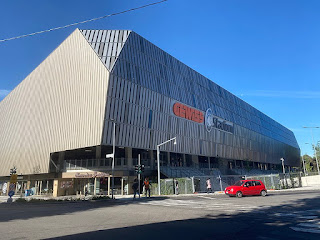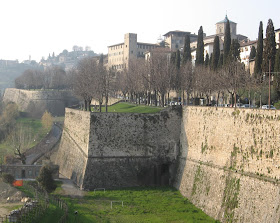Fiorenzo Magni - cycling champion
Rider from Tuscany won Giro d'Italia three times
Italy lost one of its finest professional riders and its last link with the so-called golden age of Italian cycle racing when Fiorenzo Magni died on this day in 2012. Tuscan-born Magni was a multiple champion, winning the Giro d'Italia three times, as well as three Italian Road Race Championships. He had seven stage wins in the Tour de France, in which he wore the yellow jersey as race leader for a total of nine days. His other major victories were in the demanding Tour of Flanders, in which he became only the second non-Belgian winner in 1949 and went on to win three times in a row, a feat yet to be matched. Magni might have been even more successful had his career not coincided with those of two greats of Italian cycling, the five-times Giro champion Fausto Coppi, who was twice winner of the Tour de France, and Gino Bartali, who won three Giros and one Tour de France. His reputation for toughness, however, was unrivalled. He relished racing in harsh, wintry weather, as often prevailed in the Tour de Flanders, and refused to give in to injuries if he happened to have a fall. The classic example of this came in the 1956 Giro d'Italia, his final ride in Italy's foremost event, when an accident left him with a broken left collarbone only halfway through the race. Read more…
_________________________________________
Umberto Boccioni - painter
Artist who died tragically young was key figure in Futurism
The painter Umberto Boccioni, who became arguably the leading artist of Italian Futurism before the First World War, was born on this day in 1882 in Reggio Calabria. Futurism was an avant-garde artistic, social and political movement that was launched by the poet Filippo Tommaso Marinetti in 1909. Its ethos was to embrace modernity and free Italy from what was perceived as a stifling obsession with the past. The Futurists admired the speed and technological advancement of cars and aeroplanes and the new industrial cities, all of which they saw as demonstrating the triumph of humanity over nature through invention. Their work attempted to capture the dynamism of life in a modern city, creating images that convey a sense of the power and energy of industrial machinery and the passion and violence of social change. Boccioni became part of the movement after meeting Marinetti in Milan early in 1910, after which he joined Giacomo Balla, Gino Severini, Carlo Carrà and Luigi Russolo in signing Il manifesto dei pittori futuristi - the Manifesto of Futurist Painters. In the same year, Boccioni completed one of his finest works, entitled La città che sale, which is translated as The City Rises and which many consider to be the first truly Futurist painting. Read more…
_____________________________________
Carlo Urbani – microbiologist
Infectious disease expert who identified SARS
The doctor and microbiologist Carlo Urbani, whose decisive action after discovering the deadly SARS virus saved millions of lives, was born on this day in 1956 in Castelplanio, near Ancona. Dr Urbani himself died after contracting the condition, which had been given the name severe acute respiratory syndrome. He identified it in an American businessman who had been taken ill in Hanoi, the capital of Vietnam, with suspected influenza. Recognising quickly that what he was dealing with was not a straightforward case of ‘flu, Urbani, who was working in Vietnam as an infectious diseases specialist for the World Health Organisation, immediately alerted WHO headquarters in Geneva. He convinced them that what he had discovered posed a grave threat to life and thus sparked the most effective response to a major epidemic in the history of medicine. At a local level, be persuaded the Vietnamese health authorities to introduce a raft of preventative measures, including large-scale screening and prompt, secure isolation of suspected victims, that slowed the spread of the disease. It was as a result of Urbani’s actions that the epidemic was largely contained. Read more…
Booking.com.jpg)




.jpg)

.jpg)

.jpg)
.jpg)
_-_Mario,_Giovanni_Matteo_(1810-1883),_tenore_2a.jpg)




